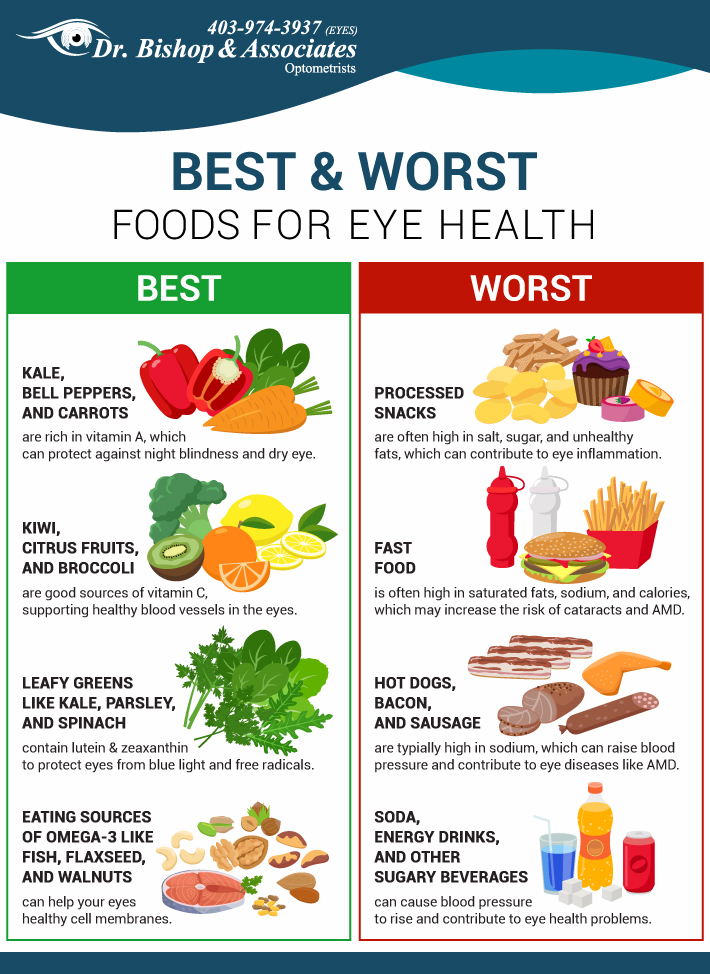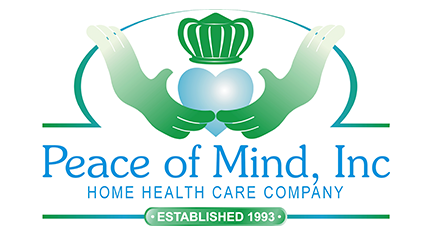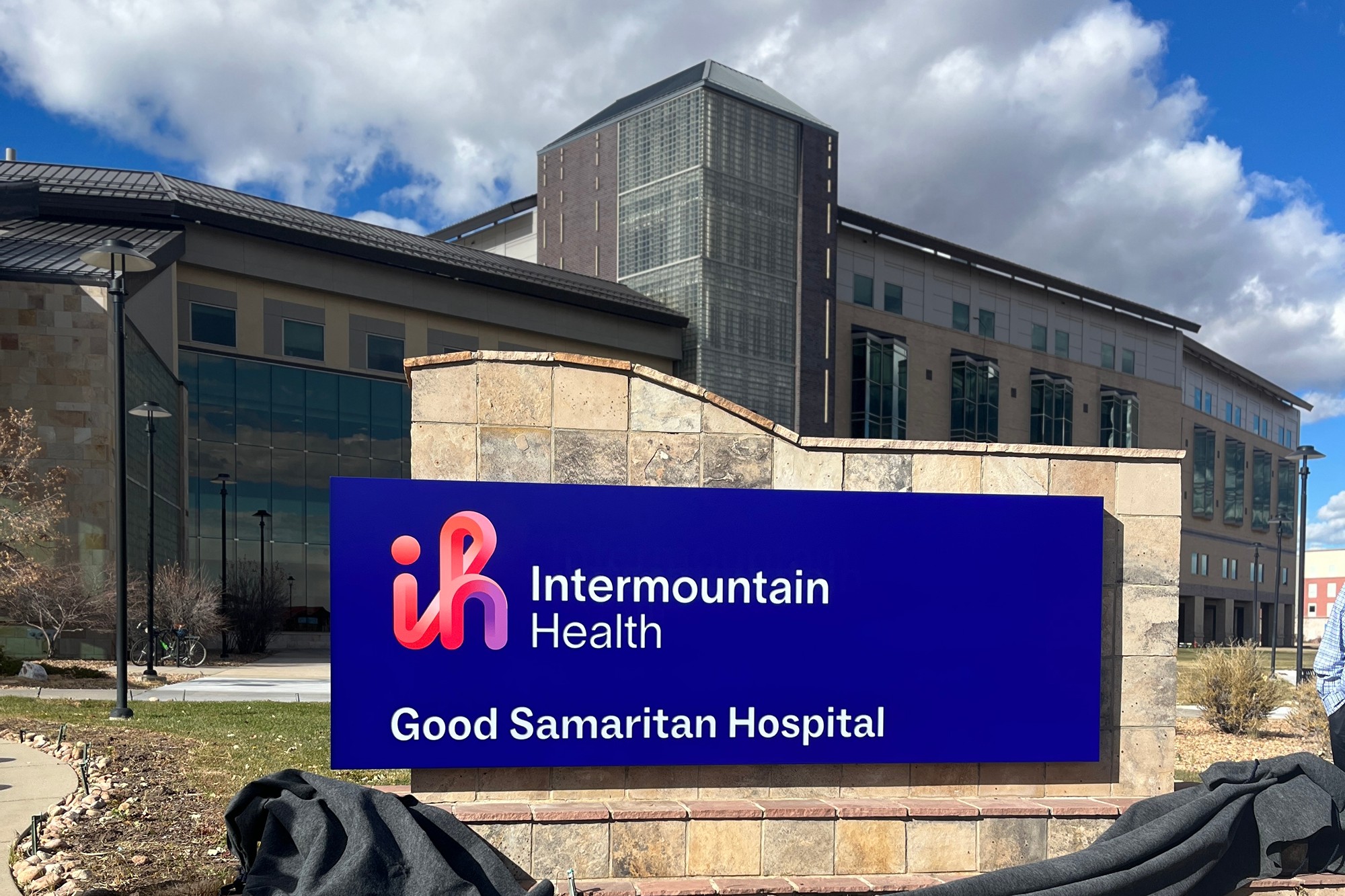Dietary choices significantly influence ocular well-being. Certain food categories, due to their composition and effects on the body, can negatively impact the structural integrity and functional capacity of the visual system. For instance, excessive consumption of processed carbohydrates may contribute to insulin resistance, indirectly increasing the risk of age-related macular degeneration.
Maintaining optimal vision throughout life necessitates informed nutritional decisions. Adhering to a balanced diet that minimizes detrimental substances can proactively mitigate the likelihood of developing various ocular pathologies. Historically, populations with limited access to nutrient-rich foods have demonstrated a higher prevalence of specific eye conditions, illustrating the correlation between sustenance and sight.
Consequently, a detailed examination of dietary components known to exert adverse effects on the eyes warrants careful consideration. The following discussion will explore specific categories of food and their potential impact on vision, alongside recommendations for adopting more beneficial eating habits.
1. Processed Carbohydrates
Processed carbohydrates constitute a significant element within the context of foods detrimental to ocular health. These refined grains, stripped of fiber and essential nutrients, exhibit a high glycemic index. This leads to rapid spikes in blood glucose levels, triggering a cascade of metabolic events that can negatively affect the delicate vascular structures within the eye. The sustained hyperglycemia associated with regular consumption of these carbohydrates can contribute to the development of diabetic retinopathy, a leading cause of blindness.
The detrimental effects of processed carbohydrates are further amplified by their prevalence in contemporary diets. Readily available and heavily marketed, these foods often displace more nutritious options. For example, the habitual consumption of white bread, pastries, and sweetened cereals, common components of many breakfast routines, directly elevates the risk profile for developing age-related macular degeneration and other ocular vascular diseases. The impact extends beyond direct vascular damage, as the inflammatory response triggered by high glucose levels contributes to oxidative stress, further compromising ocular tissues.
The understanding of processed carbohydrates as a component of the “worst foods for eye health” underscores the importance of dietary choices in preventative eye care. While eliminating these foods entirely may be impractical, consciously reducing their intake and substituting them with whole grains, legumes, and vegetables presents a viable strategy for mitigating potential ocular damage. The practical significance of this knowledge lies in empowering individuals to proactively manage their long-term visual health through informed nutritional decisions.
2. Saturated and Trans Fats
Saturated and trans fats, prevalent in many processed and animal-derived foods, represent a significant category within “worst foods for eye health.” These fats contribute to elevated levels of LDL cholesterol, fostering the development of atherosclerosis. The resultant narrowing of blood vessels restricts oxygen and nutrient delivery to ocular tissues, directly impacting retinal and optic nerve function. Examples of foods high in these fats include fried foods, processed snacks, and fatty cuts of meat. Consuming these items regularly increases the risk of developing conditions such as age-related macular degeneration, diabetic retinopathy, and glaucoma.
Furthermore, saturated and trans fats exacerbate systemic inflammation. Chronic inflammation is implicated in the pathogenesis of numerous ocular diseases, contributing to the breakdown of cellular structures and impaired immune response within the eye. The importance of understanding this connection lies in the ability to make informed dietary choices. Individuals can actively reduce their risk by limiting their intake of such foods and opting for healthier fats found in sources like avocados, nuts, and oily fish. This shift towards unsaturated fats provides essential fatty acids beneficial for maintaining ocular health, while concurrently reducing the harmful inflammatory effects.
In conclusion, saturated and trans fats pose a significant threat to visual well-being. Their contribution to atherosclerosis and systemic inflammation directly impacts ocular health. By recognizing these fats as components of “worst foods for eye health” and making informed dietary substitutions, individuals can proactively mitigate the risk of developing debilitating eye conditions. The knowledge translates into practical action, empowering individuals to protect their sight through conscious nutritional choices.
3. High Sodium Intake
Elevated sodium consumption represents a significant consideration within the framework of foods detrimental to eye health. The primary impact of excessive sodium intake manifests as elevated blood pressure, a condition that places undue stress on the delicate vasculature of the eyes. This increased pressure can damage retinal blood vessels, compromising their ability to deliver essential nutrients and oxygen to the retina. Chronically elevated blood pressure, often stemming from a diet high in processed foods and added table salt, contributes to hypertensive retinopathy, a condition that can lead to visual impairment. For example, frequent consumption of fast food, canned soups, and processed meats, all typically high in sodium, elevates the risk of developing this condition, underscoring the practical importance of recognizing high sodium intake as a key component of “worst foods for eye health.”
Beyond the direct effects on retinal blood vessels, high sodium intake can also exacerbate other underlying conditions that affect vision. In individuals with pre-existing diabetes, elevated blood pressure from high sodium intake can accelerate the progression of diabetic retinopathy. Similarly, in individuals predisposed to glaucoma, increased blood pressure may contribute to elevated intraocular pressure, further damaging the optic nerve. The cumulative effect of high sodium intake on the ocular system is therefore multifaceted, impacting both the structural integrity of blood vessels and the progression of other eye diseases. Dietary modifications aimed at reducing sodium intake, such as limiting processed foods and using alternative seasonings, offer a proactive approach to mitigating these risks.
In summary, high sodium intake contributes significantly to the classification of certain foods as detrimental to eye health. The link between excessive sodium, elevated blood pressure, and damage to ocular blood vessels and the optic nerve is well-established. While completely eliminating sodium from the diet is not feasible or desirable, adopting a conscious approach to reducing sodium consumption, particularly from processed sources, offers a tangible strategy for protecting long-term visual well-being. The challenge lies in increasing public awareness of the hidden sodium content in many common foods and empowering individuals to make informed dietary choices that support ocular health.
4. Sugary Beverages
Sugary beverages, characterized by high concentrations of added sugars, represent a concerning category within the context of detrimental dietary influences on ocular health. Their widespread consumption contributes significantly to systemic metabolic dysregulation, indirectly impacting the delicate structures and functions of the eye. The following points elaborate on specific aspects of this association.
-
Rapid Glucose Spike and Insulin Resistance
Sugary beverages, such as sodas, sweetened juices, and energy drinks, induce rapid elevations in blood glucose levels. This necessitates a surge in insulin production. Over time, frequent consumption can lead to insulin resistance, a condition where cells become less responsive to insulin’s signals. This metabolic dysfunction increases the risk of diabetic retinopathy, a leading cause of blindness characterized by damage to the blood vessels in the retina.
-
Inflammation and Oxidative Stress
The high sugar content in these beverages promotes systemic inflammation. Elevated glucose levels trigger the production of inflammatory markers, which can compromise the integrity of ocular tissues. Furthermore, the metabolic processes involved in processing excessive sugar generate free radicals, leading to oxidative stress. This oxidative damage can contribute to the development of age-related macular degeneration (AMD) and other degenerative eye conditions.
-
Weight Gain and Associated Health Risks
Regular consumption of sugary beverages contributes significantly to weight gain and obesity. Obesity, in turn, is associated with a higher risk of developing type 2 diabetes and cardiovascular disease, both of which have significant implications for ocular health. Increased body mass index correlates with a higher prevalence of diabetic retinopathy and glaucoma, further emphasizing the indirect negative impact of these beverages.
-
Nutrient Displacement
Sugary beverages often displace more nutritious options in the diet. Individuals who frequently consume these drinks may be less likely to consume adequate amounts of vitamins, minerals, and antioxidants crucial for maintaining ocular health. This nutrient deficiency exacerbates the detrimental effects of the high sugar content, compounding the risk of developing eye diseases.
The cumulative effect of rapid glucose spikes, inflammation, weight gain, and nutrient displacement positions sugary beverages as a noteworthy component of diets detrimental to ocular well-being. The understanding of these multifaceted impacts supports the importance of limiting sugary beverage consumption and promoting the adoption of healthier alternatives such as water, unsweetened tea, and naturally flavored beverages.
5. Excessive Alcohol Consumption
Excessive alcohol consumption warrants consideration when evaluating dietary factors detrimental to ocular health. While not strictly a food, alcohol’s metabolic effects and potential for nutrient displacement align it with food groups that negatively impact vision. Its chronic misuse can induce a range of physiological disturbances with direct and indirect consequences for eye health.
-
Nutrient Deficiencies
Excessive alcohol intake often leads to deficiencies in essential nutrients, including thiamine (vitamin B1), folate, and vitamin A. Thiamine deficiency can result in optic neuropathy, a condition characterized by damage to the optic nerve, leading to vision loss. Vitamin A deficiency can cause night blindness and corneal damage. The displacement of nutrient-rich foods by alcohol consumption exacerbates these deficiencies, further compromising ocular integrity.
-
Liver Damage and Toxin Accumulation
Chronic alcohol abuse damages the liver, hindering its ability to detoxify the body. This impaired detoxification process leads to an accumulation of toxins, which can negatively affect various organ systems, including the eyes. The buildup of acetaldehyde, a toxic byproduct of alcohol metabolism, has been linked to oxidative stress and retinal damage.
-
Increased Risk of Cataracts
Epidemiological studies suggest a correlation between high alcohol consumption and an increased risk of developing cataracts. While the exact mechanisms remain under investigation, alcohol’s potential to induce oxidative stress and inflammation within the lens may contribute to cataract formation.
-
Indirect Effects via Systemic Conditions
Excessive alcohol consumption is a known risk factor for several systemic conditions, including diabetes and cardiovascular disease. These conditions, in turn, can significantly impact ocular health. Diabetic retinopathy, as previously discussed, is a major cause of blindness, while cardiovascular disease can lead to reduced blood flow to the eyes, increasing the risk of ischemic optic neuropathy.
In summary, excessive alcohol consumption, while not technically a “food,” shares characteristics with foods detrimental to ocular health due to its potential to induce nutrient deficiencies, liver damage, and increased risk of systemic diseases. The combined effects of these factors contribute to an elevated risk of various eye conditions, highlighting the importance of moderation and responsible alcohol consumption in maintaining long-term visual well-being. The association serves as a reminder that dietary and lifestyle choices are inextricably linked to ocular health.
6. Artificial Sweeteners
The role of artificial sweeteners in the context of dietary influences on ocular health remains a subject of ongoing investigation. While these substances are often marketed as healthier alternatives to sugar, their potential long-term effects on various physiological systems, including the visual system, require careful consideration. Specific facets of this connection warrant a detailed examination.
-
Metabolic Disruption and Glucose Tolerance
Certain artificial sweeteners have been shown to disrupt gut microbiota, potentially leading to impaired glucose tolerance and insulin sensitivity. These metabolic changes can indirectly increase the risk of diabetic retinopathy, a condition characterized by damage to the retinal blood vessels resulting from elevated blood glucose levels. While the precise mechanisms are still being elucidated, the potential for metabolic dysregulation raises concerns about their long-term impact on ocular health.
-
Excitotoxicity and Neuronal Damage
Some artificial sweeteners, particularly aspartame, are metabolized into substances that can act as excitotoxins. Excitotoxins can overstimulate neurons, potentially leading to neuronal damage or death. The retina, being a neural tissue, is theoretically susceptible to this type of damage. While the evidence for direct retinal damage from artificial sweeteners is limited, the potential for excitotoxicity warrants further investigation, especially concerning chronic, high-dose consumption.
-
Inflammatory Responses
Emerging research suggests that certain artificial sweeteners may trigger inflammatory responses in some individuals. Chronic inflammation is a known contributor to various eye diseases, including age-related macular degeneration and glaucoma. While the specific pathways and extent of inflammation induced by artificial sweeteners are still being studied, the potential for exacerbating inflammatory processes in the eye necessitates caution.
-
Migraine and Visual Disturbances
Some individuals report experiencing migraines and visual disturbances after consuming artificial sweeteners, particularly aspartame. While these effects are not universally experienced, the connection between these sweeteners and neurological symptoms highlights their potential to affect neural pathways involved in vision. The underlying mechanisms may involve the release of neurotransmitters or other neurochemical changes.
While definitive evidence linking artificial sweeteners directly to specific eye diseases remains limited, the potential for metabolic disruption, excitotoxicity, inflammatory responses, and neurological effects raises concerns about their long-term safety. The classification of certain foods and beverages containing high concentrations of artificial sweeteners as potentially detrimental to ocular health warrants continued scientific investigation and cautious consumption patterns, particularly for individuals with pre-existing metabolic or neurological conditions. Future research should focus on elucidating the specific mechanisms by which artificial sweeteners may impact ocular health and identifying vulnerable populations who may be at increased risk.
Frequently Asked Questions
This section addresses common queries regarding the impact of specific foods on ocular well-being, focusing on categories classified as “worst foods for eye health.” The information presented aims to clarify prevalent misconceptions and provide actionable insights based on current scientific understanding.
Question 1: Are all processed foods detrimental to vision?
Not all processed foods inherently damage vision. However, those high in refined carbohydrates, saturated fats, and sodium significantly elevate the risk of ocular complications. The degree of processing and the specific nutrient profile dictate the potential harm.
Question 2: Does eliminating sugar completely improve eye health?
While drastically reducing sugar intake benefits overall health, complete elimination is often impractical and unnecessary. Moderation, coupled with a focus on consuming whole, unprocessed foods, is the more sustainable and effective approach for maintaining ocular well-being.
Question 3: Is the impact of “worst foods for eye health” reversible?
The reversibility of damage depends on the extent and duration of the detrimental dietary habits. Early intervention with dietary modifications can mitigate further damage and, in some cases, improve existing conditions. However, advanced stages of certain diseases may not be fully reversible.
Question 4: Are there specific “worst foods for eye health” that affect only certain populations?
Genetic predispositions, pre-existing conditions, and lifestyle factors can influence susceptibility to the negative effects of certain foods. For example, individuals with diabetes are particularly vulnerable to the detrimental effects of sugary beverages and processed carbohydrates.
Question 5: Can vitamin supplements counteract the negative effects of “worst foods for eye health?”
While vitamin supplements can play a supportive role in maintaining ocular health, they cannot fully compensate for consistently poor dietary choices. A balanced diet rich in essential nutrients remains the foundation for optimal vision.
Question 6: How frequently should one undergo eye examinations when consistently consuming “worst foods for eye health?”
Individuals with dietary habits characterized by high consumption of foods detrimental to ocular health should undergo comprehensive eye examinations at least annually, or as recommended by an eye care professional. More frequent monitoring may be necessary for those with pre-existing conditions or risk factors.
In summary, the key takeaways emphasize the importance of moderation, informed dietary choices, and regular eye examinations in mitigating the potential adverse effects of specific food categories on ocular health. The knowledge empowers individuals to take proactive steps towards preserving their vision.
The subsequent section will outline specific dietary recommendations and lifestyle modifications that promote ocular well-being and counteract the effects of foods deemed detrimental to eye health.
Mitigating Risks Associated with “Worst Foods for Eye Health”
This section provides actionable strategies for minimizing the negative impact of dietary choices classified as detrimental to ocular well-being. The recommendations emphasize proactive measures and sustainable lifestyle modifications.
Tip 1: Prioritize Whole, Unprocessed Foods: Shifting dietary emphasis towards whole, unprocessed foods naturally reduces the intake of refined carbohydrates, saturated fats, and sodium. Examples include substituting white bread with whole-grain options, replacing processed snacks with fresh fruits and vegetables, and opting for lean protein sources over processed meats.
Tip 2: Limit Sugary Beverage Consumption: Reducing or eliminating sugary beverages, such as sodas, sweetened juices, and energy drinks, helps stabilize blood glucose levels and reduces systemic inflammation. Water, unsweetened tea, and infused water are healthier alternatives that promote hydration without the detrimental effects of added sugars.
Tip 3: Moderate Alcohol Intake: Adhering to recommended guidelines for alcohol consumption minimizes the risk of nutrient deficiencies and liver damage. For adults, this typically translates to no more than one drink per day for women and no more than two drinks per day for men. Abstinence may be necessary for individuals with pre-existing liver conditions or a history of alcohol abuse.
Tip 4: Monitor Sodium Intake: Consciously monitoring sodium intake through careful label reading and reduced consumption of processed foods helps maintain healthy blood pressure levels. Preparing meals at home allows for greater control over sodium content, and using alternative seasonings, such as herbs and spices, can enhance flavor without adding excessive sodium.
Tip 5: Choose Healthy Fats: Replacing saturated and trans fats with unsaturated fats from sources such as avocados, nuts, seeds, and oily fish supports cardiovascular health and reduces systemic inflammation. Incorporating these healthy fats into the diet promotes optimal ocular circulation and reduces the risk of age-related macular degeneration.
Tip 6: Optimize Nutrient Intake: Ensuring adequate intake of essential nutrients, including vitamins A, C, and E, as well as zinc and omega-3 fatty acids, provides crucial support for ocular health. These nutrients can be obtained through a balanced diet or, when necessary, through targeted supplementation under the guidance of a healthcare professional.
Tip 7: Maintain a Healthy Weight: Achieving and maintaining a healthy body weight reduces the risk of diabetes, cardiovascular disease, and other systemic conditions that can negatively impact vision. A combination of regular physical activity and a balanced diet is essential for weight management.
By implementing these actionable tips, individuals can proactively mitigate the risks associated with “worst foods for eye health” and promote long-term ocular well-being. The recommendations emphasize the importance of informed dietary choices and sustainable lifestyle modifications in preserving vision.
The concluding section will summarize the key findings and reiterate the importance of prioritizing ocular health through conscious dietary and lifestyle choices.
Worst Foods for Eye Health
The preceding discussion has illuminated the potential detrimental effects of specific dietary choices on ocular well-being. Categories identified as “worst foods for eye health,” including processed carbohydrates, saturated fats, high sodium intake, sugary beverages, excessive alcohol consumption, and certain artificial sweeteners, can contribute to the development and progression of various vision-threatening conditions. The impact of these dietary components extends from direct damage to retinal blood vessels to exacerbation of systemic inflammatory processes, thereby underscoring the critical link between nutrition and ocular health.
The findings presented serve as a call to vigilance. Prioritizing informed dietary decisions and adopting sustainable lifestyle modifications are paramount for safeguarding long-term visual function. While complete avoidance of all potentially detrimental foods may be unrealistic, a conscious effort to minimize their consumption and embrace a nutrient-rich diet represents a proactive approach to preserving vision. The future of ocular health depends, in part, on a collective commitment to recognizing and mitigating the risks associated with “worst foods for eye health.” Regular consultations with eye care professionals remain essential for monitoring ocular status and addressing any emerging concerns.



